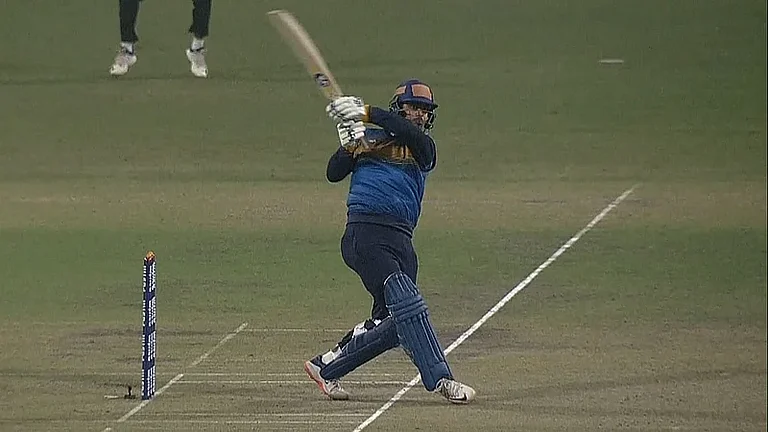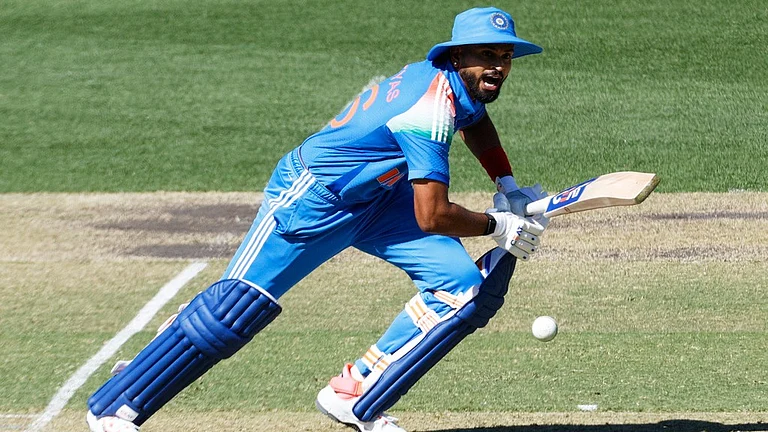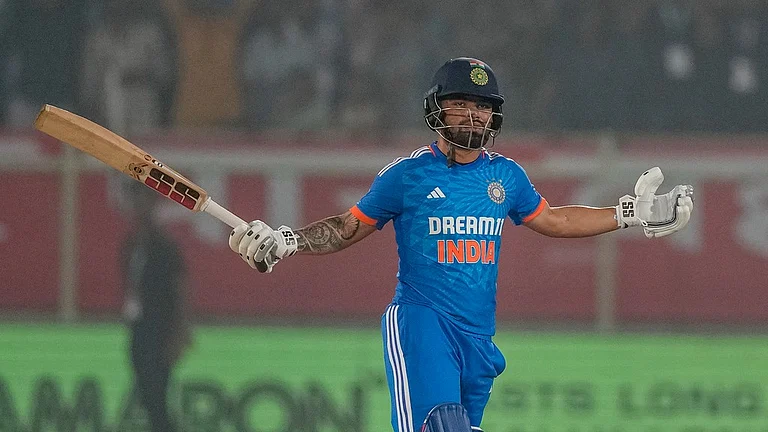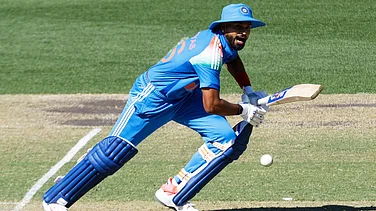Quite curiously, though, the 26-year-old was being dismissed as little more than a bundle of hype after a string of disappointing Test series. But with 18 parsimonious wickets in the recent VB Series against England and Sri Lanka, he seems ready to emerge out of Glenn McGrath’s and Jason Gillespie’s shadow.
With growing maturity—the realisation that there is more to pace bowling than merely pace has taken some time coming—fuelling his newfound confidence, Lee taking the third seamer’s place ahead of Andy Bichel in the Australian team at the World Cup is worth a good wager.
Like most men who hurl the ball at speeds in excess of 140 kph nearly all the time, he is a rhythm bowler. After marking the run-up it all comes down to one word: rhythm, he told The Observer recently.
"I’ve done a lot of work with the great fast bowler, Dennis Lillee, who has been a terrific help. To find what suits you best, you get a nice open field, with a stump down one end, you close your eyes and you push off and wait until it feels comfortable, and then run up and just bowl."
If his rhythm is off, he can be an expensive proposition. Even if he is no McGrath, there is a certain exactitude to his bowling these days in that he uses a tape measure to mark a run-up of 21.3 metres. "I’ve found, after I went through that process (of choosing the length of the run-up) that it certainly helped my pace and made me more efficient, a more economical bowler in terms of body movement and energy," he says. "You don’t want to waste energy in this job because you need it to keep concentration and, obviously, accuracy."
His good looks have got him to endorse a clutch of fashion products and accessories. The BL Range, offered by Barclays in Sydney, prides itself in being stylish, contemporary, comfortable and versatile. His work with Lillee, when he was recovering from a back injury, has ensured that his bowling is stylish, contemporary and as comfortable as can be. He would be the first to realise that, on the cricket field, while there is no question that raw pace has its rewards —every two of the five dismissals by Lee are either bowled, caught behind or trapped leg before—he needs to be versatile as well. Yet, for the moment, one of Lee’s biggest weapons is aggression. Even in the one-day scenario, where the accent is on accuracy more than anything else, he bristles with a hostility that few batsmen want to encounter.
But that’s only on the cricket field. He worries about violence among children. "I think there’s more violence these days, especially in schools, and that worries me. Kids with guns is a scary concept. We tend to think ‘Only in America’, but it’s happening in Australia too," he says.
Similarly, Mozart is the last thing you would expect to find in the touring bag of someone who drew Alex Tudor’s blood, sending the young England paceman off the field on a stretcher, in a recent Test match. But Lee, part of a five-man pub rock band called Six & Out, says he finds Mozart a helpful companion when he wants to relax in his hotel room. Any piece on Lee would be incomplete if mention is not made of the suspicion that some umpires have raised about the validity of his bowling action. Indian umpires S. Venkataraghavan and A.V. Jayaprakash reported him to the match referee Mike Denness during the Test series in New Zealand in the year 2000. Backed to the hilt by his team-mates, he has coped with such criticism and has continued what comes naturally to him. It is not only on the speed charts that Lee is breathing down Shoaib Akhtar’s neck. He boasts of having the second-best strike rate among bowlers who have claimed at least 100 wickets in One-Day Internationals. His 100 wickets have come at 28.6 balls each while Shoaib Akhtar is marginally better with a strike rate of 27.9 balls per wicket.
Lee clocked speeds of 156.2 kph during a VB Series game against Sri Lanka in December but there seems to be something in the South African air that gets Lee to bowl at his fastest. He clocked 156 kph in a One-Day International in Johannesburg in April 2000 and topped that with two deliveries in excess of 157 kph in the Newlands Test in March 2002. Though he has his reservations about the technology. "The more important thing is to get one type of speed-gun used across the board in match conditions, Lee says. "It shouldn’t matter if you’re playing in South Africa or Sri Lanka, the measuring device should be the same—and that’s not the case at the moment."
"They say fast bowlers aren’t too bright," he reminds. "Well," Lee corrects, "I always reply: who’s the brightest, the guy bowling 160 kph, or the guy facing him?"
There is no more explosive sight in cricket than a pace bowler firing one past the batsman’s defence and shattering the stumps as if a firecracker were set off beneath the wicket. So how many firecrackers will Lee set off under the batsmen’s wickets in southern Africa during the World Cup? The wait will be worth it.
(G Rajaraman is Senior Editor, www.ESPNSTAR.com)

























